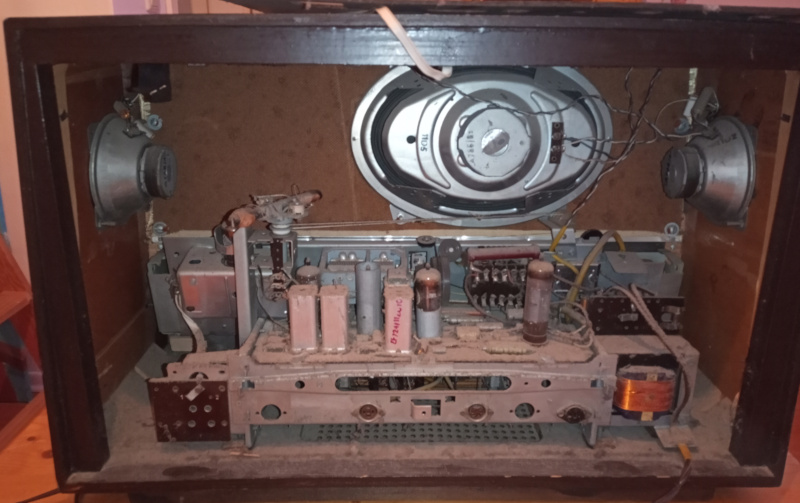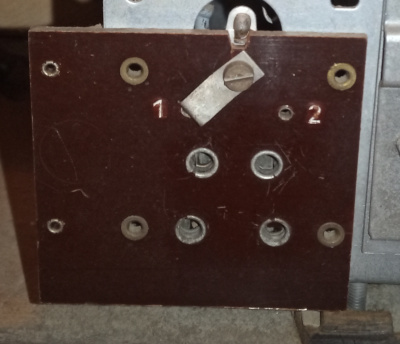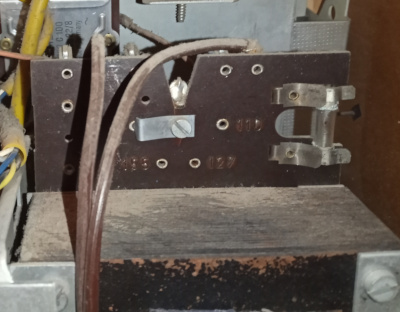Rejuvenating a Blaupunkt Granada Radio - First look
What’s wrong, and how hard is this going to be?
Rejuvenating a Blaupunkt Granada Radio - Table of Contents
While we were doing renovations here in our house, my wife and I had occasion to poke around the attic of her parent’s house. We needed a few things (furniture) for the room we renovated, and her folks had some cabinets and things that we could use. In the attic of her parent’s house, my wife saw the old Blaupunkt Granada radio that her parents had when she was a little girl.
My wife has fond memories of listening to the old radio in the living room of her parent’s house. As many small children do, she imagined there were little people inside, playing the music and reading the news.
She thought it would be nice to have it in our living room, so after checking with her parents and her brother (nobody wanted the old radio) we took it home and parked it in my (newly renovated) hobby room.
This is what it looks like:
| Blaupunkt Granada 20300 |
|---|
 |
They seem to have treated it well over the years. It is 60 years old. Radio museum.org says it was built in 1960 or 1961. It’s in pretty good shape for its age.
It sort of works. My brother in law was using it up to a few years ago, so I wasn’t too concerned about dead capacitors shorting out. I plugged it in to see what it does, and gave it quick run through.
Here’s what I found:
- FM radio works.
- It has a nasty background hum.
- Not one single AM band works.
- The tone controls and volume control work.
- The “magic eye” tuning indicator tube still works. The Granada has an EM84 as shown on the Wikipedia page.
- The sound is nice. The speakers seem OK, and it doesn’t have the horrid deep bass that everyone these days loves - just a nice, even spectrum (or so it seems to my ears.)
The hum is irritating, and has to go. I’ve also got to figure out why not a single AM band works.
I tracked down a schematic of the 20300, and was rather surprised to learn that it has only six tubes (counting the magic eye.) Given that some of them are duals, it has the equivalent of seven transistors (not counting the magic eye) to implement a multi-band AM and FM receiver - along with a phonograph input and reel-to-reel input and output (you can playback from tape or record from radio to tape.)
Fixing it is for another day. For today, I took the cover off to have a look at the old technology.
First off, here’s the back cover:
| Back cover |
|---|
 |
It shows where all the tubes are. You can also see the DIN connectors (“Diodenstecker” as they are known in Germany) for the phonograph and reel-to-reel tape player. There’s also a connector for an external speaker. (Yes, just one. The 20300 is mono only. What kind of miracles do you expect out of seven transistors?)
This is what greeted me when I took the cover off:
| Inside |
|---|
 |
It hasn’t been cleaned since it was built. My mother in law would die of embarrassment if she knew how much dust was in that thing. Her house is spotless. I won’t tell her if you don’t, OK?
I vacuumed out what I could without disassembling it, then made a few pictures.
| Inside, slightly cleaner |
|---|
 |
Looking at that picture, I notice that the chassis is built for options that the 20300 doesn’t have. There are holes for additional connectors, or maybe just for connectors in different places for different models.
The antenna and power selectors are interesting:
| Antenna switch | Power supply selector |
|---|---|
 |
 |
In a piece of modern equipment, those would be standard switches. The Granada just uses moveable metal strips with a screw to hold things tight. They aren’t intended to be twiddled with - you (or the radio technician) set them correctly when your brought it home, then you never fooled with it again. The power selector doesn’t have to be insulated despite having a live 230VAC on the bare metal. It is inside the closed housing of the radio, so no one can accidentally touch it. The fuse holder is more of the same - just bare metal clips riveted to the board.
If somebody ever again tries to tell me that penny pinching is only a modern phenomenon, I’ll just show them how this thing saved pennies. Besides the cheapskate “switches” and the fuse holder, the back is made of a really cheap grade of particle board - in contrast to the hardwood veneer of the cabinet itself.
One thing Blaupunkt didn’t cheap out on was the power transformer. The 20300 was apparently made to cover several markets, and that’s reflected in the transformer and the power selector. The transformer has primary taps for 110VAC, 127VAC, 155VAC, and 220VAC - the selector lets you choose among them with one screw. 155VAC is odd. I don’t know what country might have used 155VAC back then, and can’t find any mention of 155VAC mains systems for household wiring in modern times.
Along with penny pinching not being new, I’ll have to add “go faster stripes” to the list of things done for marketing purposes back in the old days.
Take a look at the picture above showing the insides, then look at this picture of one the side speaker grills:
| Side speaker grill |
|---|
 |
The grill is much larger than the speaker. It’s just larger for show - it makes the buyer think there’s a bigger speaker behind it. The same goes for the front speaker. The cloth covered speaker grill on the front takes up easily half the front panel, but the speaker (and the opening in the panel) are much smaller.
A quick check in the dark shows all the tubes lighting up, so whatever is wrong isn’t simply a burned out tube - though there may be one lighting up but not working.
The schematic shows a selenium bridge rectifier and a 50µF electrolytic capacitor for the DC supply. I’ll probably look at replacing both of those.
The dead AM bands is a mystery. From what my (non-tube acclimated) eyes see, the FM receiver uses the AM receiver as a demodulator so that if FM works AM ought to work as well. I’ll look at it in more detail another time.
For now, I’m going to turn things off and go pack up. We’re going to drive down tomorrow and visit our son for a few days. It’ll be at least a week before I get another chance to twiddle with the old Granada.